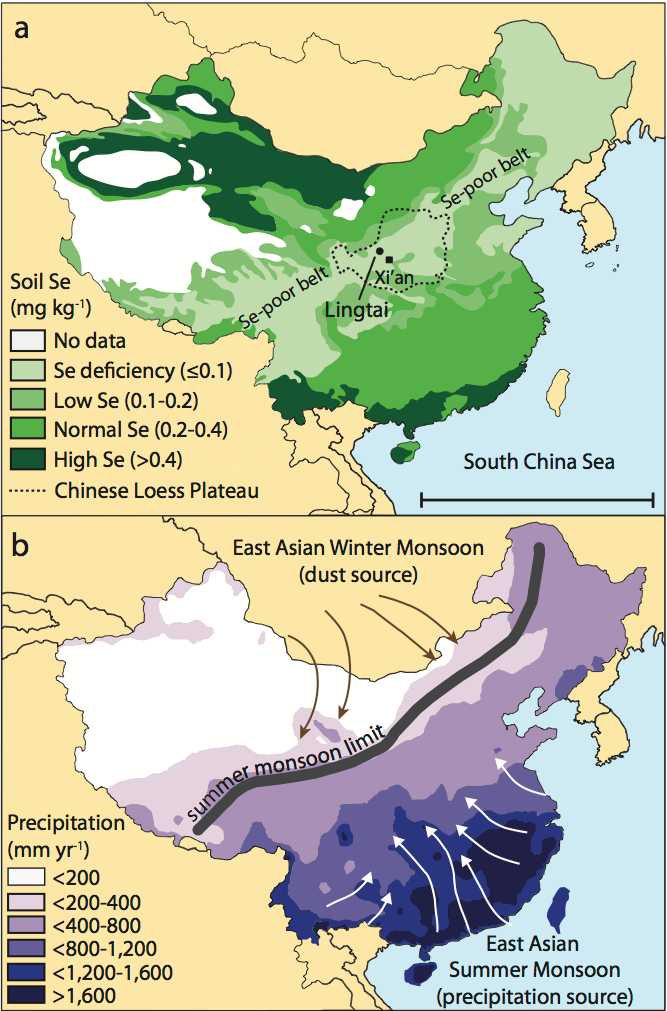Loess as environmental archive
The atmosphere is an important selenium reservoir with estimates up to 20'000 tons of selenium being cycled through the troposphere each year. Therefore, the atmosphere could be an important source of selenium to the land, for example supplying agricultural soils via deposition. We investigate this hypothesis using sediment sequences from the Chinese Loess Plateau. This Plateau, located in north-central China, forms an excellent record of continental climate change spanning the past 2.6 to 7 million years and debatably, even 22 million years. We studied the vertical distribution of selenium in a loess sediment sequence at Lingtai and compared obtained selenium trends to climate data from the same sequence. We found that soil selenium distribution may be related to China’s main precipitation source, the East Asian Monsoon, as during particular warm and wet time periods in the geologic past (interglacials) selenium concentrations were linked to variability in climatic proxies indicative of effective precipitation. Our findings provide support to the hypothesis that rainfall is a source of selenium for soils. It is likely that the low amount of rainfall in central China, in addition the absence of local sources of selenium, such as selenium-rich rocks, is a main factor in explaining the belt of low soil selenium levels that stretches from northeast to southwest China. This belt is one of the most selenium deficient areas in the world and home to illnesses such as Kashin-Beck disease (a bone disease), which has affected the lives of one million inhabitants.
